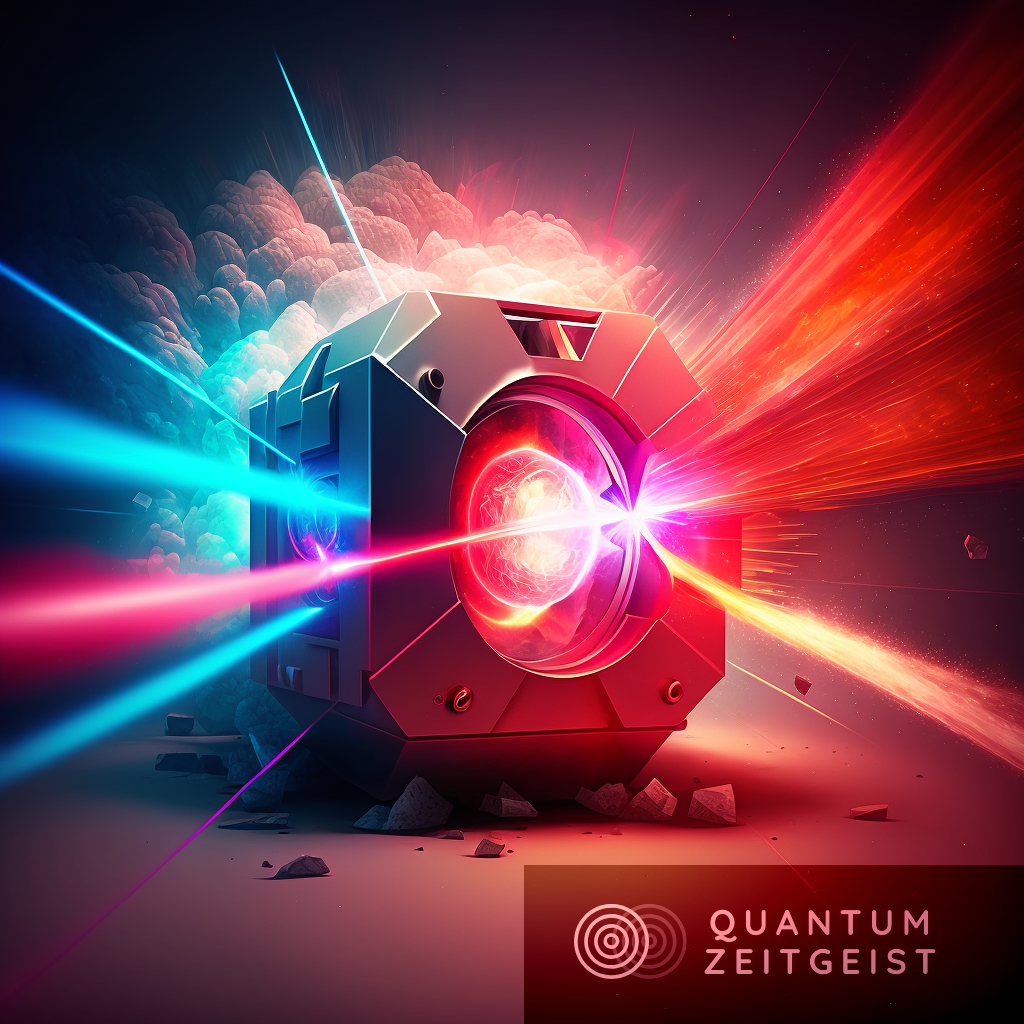In a recent publication released on April 17 in Nature Photonics, Kues and his research team have introduced the first-ever photonic chip that seamlessly integrates all crucial components necessary for generating entangled photon pairs. The researchers utilized a pioneering approach that amalgamates two distinct semiconductor technologies to create a hybrid chip to generate laser light and convert it into high-quality entangled photons.
Researchers have discovered that light-based quantum technology has the potential to create virtually unhackable communication networks and computers capable of solving previously unsolvable problems. However, generating exotic quantum states of light has traditionally required bulky equipment, limiting the scalability of potential applications.
To solve this issue, a team of researchers has developed a new device that can fit all necessary components onto a chip smaller than a coin, which could potentially revolutionize the field of quantum technology.
Optical Amplifier and Waveguide Integration in Newly-Developed Photonic Chip for Generating Entangled Photons
In the initial portion of the newly-developed photonic chip, an optical amplifier was constructed utilizing indium phosphide, which has been conventionally employed in creating semiconductor lasers. However, this material is not well-suited for generating entangled photons. Therefore, the researchers integrated this section of the chip with a waveguide and connected it to a second portion of the chip, which was made from silicon nitride.
This section contains a series of “microring resonators,” circular waveguides that enable laser light to move around in a forced pattern of reducing diameter.
“All the parts of this work have been demonstrated before; however, the integration of all of them together is an achievement,”
Amr Helmy, a professor of photonics at the University of Toronto
The device employs both an electrically pumped InP gain section and a Si3N4 low-loss microring filter system and demonstrates high-performance parameters. It can emit pairs over four resonant modes in the telecom band and achieve a remarkable pair detection rate of approximately 620 Hz, with a high coincidence-to-accidental ratio of approximately 80.
“We’ve demonstrated now that the functionality is possible, but to really build it there’s still a lot of research to do”
Michael Kues
Hybrid Photonic Platform Enables Compact and High-Dimensional Entangled Quantum Sources for Commercial Applications
The newly developed source can produce quantum states (qubits/qudits) that are entangled in high dimensions and at specific frequencies. This has been verified through quantum interference measurements and density matrix reconstruction, with high visibilities of up to 96% and fidelities of up to 99%. The approach taken in this research utilizes a hybrid photonic platform, which offers scalability, commercial viability, and low cost.
The resulting entangled quantum sources are compact, lightweight, and can be easily deployed in practical, out-of-laboratory applications such as quantum processors and quantum satellite communication systems.
In this study, the factors limiting the coherence time of the system are explained as well. The high Q factor associated with a narrower resonance linewidth presents a challenge in aligning the resonant modes of the high-Q microrings that constitute the Vernier filter to a single frequency over a long period of time, which is detrimental to the stable operation of the system.
In addition, the Q factor, and hence the photon coherence time in the Vernier laser configuration, is limited by the ring coupling coefficient, which needs to be larger than the round-trip loss coefficient to ensure good transmission of the Vernier filter and to initiate lasing for the external cavity defined by the reflecting end of the RSOA and the Sagnac mirror.
The link between the noise suppression filter efficiency and key performance parameters of the device
The efficiency of the noise suppression filter plays a crucial role in determining the performance parameters such as coincidence-to-accidental ratio (CAR), interference visibilities, and fidelities of the entangled quantum states generated by the device. In particular, a high side-mode suppression ratio (SMSR) is essential to ensure that the laser operates at a single frequency and there are no unwanted side modes in the spectral domain. The SMSR is a measure of the ratio of the intensity of the main mode to the intensity of the adjacent side modes.
A high SMSR is indicative of a narrow linewidth and high spectral purity, which is critical for the generation of high-quality entangled quantum states. Therefore, the efficiency of the noise suppression filter is a key factor in the successful implementation of practical quantum technologies, such as quantum processors and quantum communication systems, that rely on the generation of high-dimensional entangled quantum states with high fidelities and low noise levels.
In conclusion, the researchers highlight that the significant reduction in the size of a quantum light source by a factor of 1,000 has the potential to facilitate the translation of this technology from the laboratory into the practical domain. In addition to applications in quantum computing and quantum networking, the compact form factor of the photonic chip could be advantageous in certain quantum sensing endeavors.
This breakthrough holds tremendous significance for the field of photonics, as it represents a significant milestone in the pursuit of generating entangled photon pairs in a compact and efficient manner.
Read more about it here.

